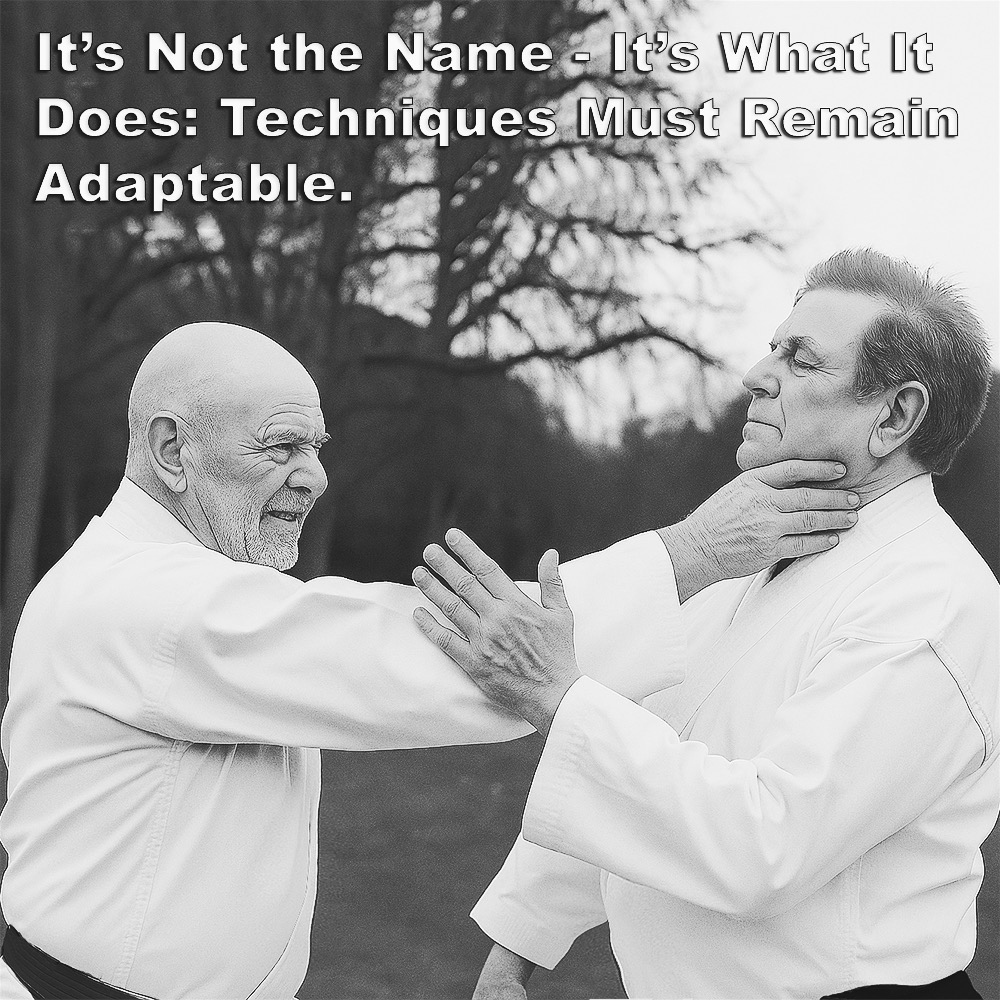
It’s Not the Name – It’s What It Does: Techniques Must Remain Adaptable.
Posted by ADAM CARTER on JUN 20, 2025

It’s Not the Name – It’s What It Does: Techniques Must Remain Adaptable.
(Approx 2 minute 20 second read)
Lately, I’ve had a lot of comments about how a particular technique is done in this or that style, with this or that detail. Some of these comments are thoughtful… but many miss the point.
If everything goes wrong and you have to fight, you don’t have the luxury of choosing from hundreds of techniques. You’d freeze trying to recall the right one.
That’s not how real combat works – and I don’t believe it’s how the two-person drills in kata were ever meant to work.
This is why I firmly believe: the terminology, the Japanese names we use, can sometimes get in the way. The more you label a movement, the more fixed it becomes in your mind. You stop exploring what else the movement can do.
Let me give you an example.
Bill “Superfoot” Wallace – one of the great kickboxers – had an injury that meant he couldn’t fight like everyone else. So he developed a way of using three different kicks from the same starting position. His opponents couldn’t predict what was coming, because the beginning of each kick looked exactly the same. He had mastered adaptability.
What’s that got to do with us? Everything.
Many of our techniques start from the same place. They just end differently. But instead of seeing that as one adaptable movement, we treat each one as a separate technique – with its own name, rules, and applications. That creates clutter in the mind.
Here’s another example. Someone said that oi-zuki isn’t in older kata. Let’s go with that for a moment – perhaps not as a stepping punch in the way it’s usually taught – but here’s the point: the movement existed long before it got its rigid name or became formalized. That ‘chasing’ forward action is definitely present in older kata, even if it wasn’t called oi-zuki. It’s the function that matters – not the specific term.
If you stop naming every variation, something changes. A simple oi-zuki – let’s use this as the example – no longer means just one thing. It could be a grab, a push, a barge, a chasing strike, a set-up for a throw.
If you open your hand, now it could be an eye gouge, a throat grab, a hair pull. All of it – same start, different outcome.
This is what the karate pioneers understood. Simplicity. Adaptability. Principle over pattern.
That’s why in my own dojo, we still use the Japanese terms – because they provide a shared language. If my students visit another dojo, I want them to understand what’s being asked of them. But those names are just the starting point. What matters more is understanding the principle behind the movement.
When you train that way, the technique becomes adaptable – and the name doesn’t limit what it can do.
I understand the value of naming techniques – it’s part of karate, and it helps with teaching and creating conformity. But in my mind, it can also be too limiting. A technique is far richer when we focus on what it does, not just what it’s called. That’s where true adaptability begins.
In a real confrontation, you won’t have time to sift through a mental catalogue of named techniques. You’ll only have what you’ve trained with intention. That’s why principles matter more than labels.
Written by Adam Carter
